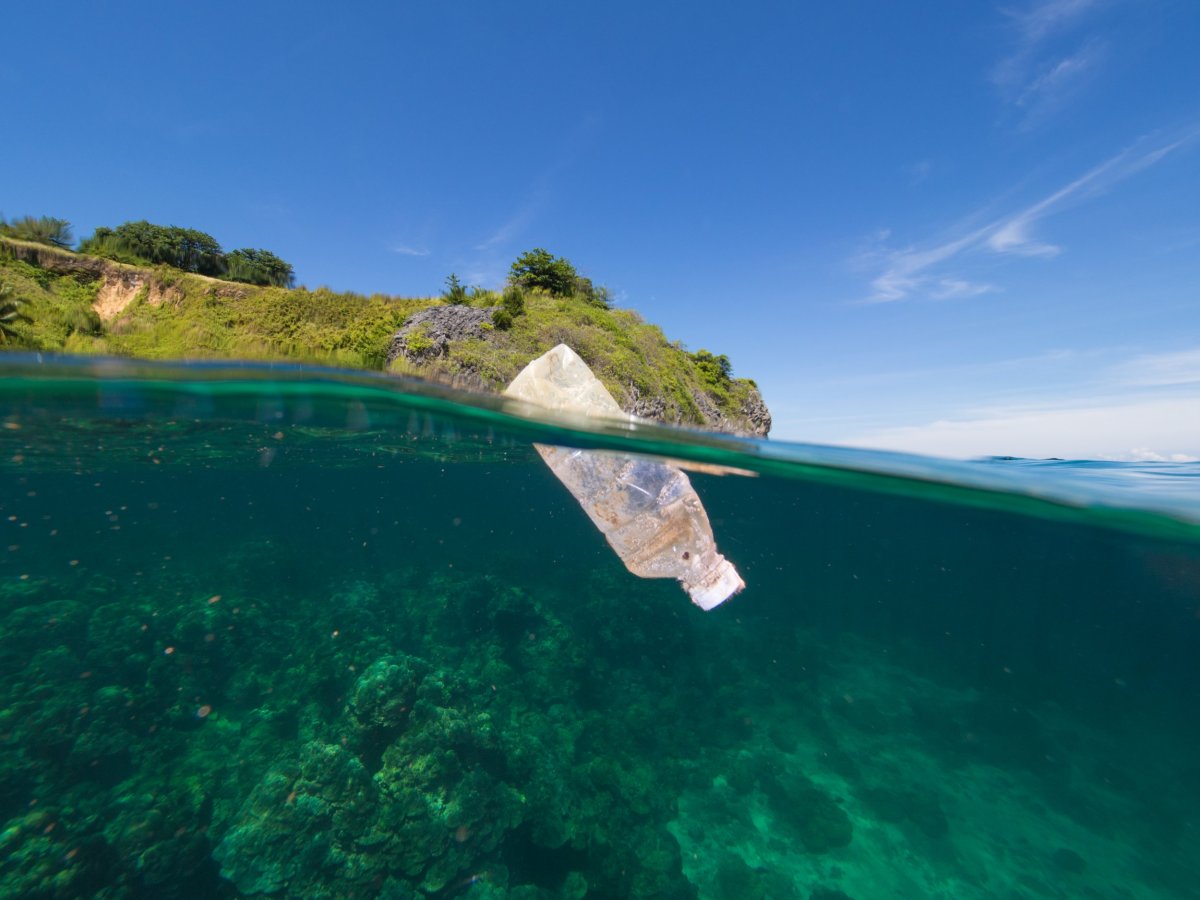Microscopic pieces of plastic waste floating in our oceans are sticking together to form larger pieces, potentially posing a risk to animals and starving deep-sea ecosystems, scientists have warned.
Microplastics measuring 5 mm or less are being fused together by exopolymers, a type of tacky biopolymer let off by organisms such as bacteria, according to research published in the journal Marine Pollution Bulletin.
To investigate how biopolymers and plastics react when they meet, the team took Scottish water from the Faroe-Shetland Channel and the Firth of Forth: an estuary of a number of rivers. They then re-created the ocean surface environment and added polystyrene microplastics and nanoplastics (measuring between 1 to 1000 nanometers or less) to the water.
After a few minutes, organic substances including microorganisms and algae fused with the plastics and created masses called agglomerates. It was the biopolymers that caused the biggest formations.
Dr. Stephen Summers, an author of the study and research fellow at Nanyang Technical University in Singapore, explained in a statement: "We found that the biopolymers envelop or engulf the nanoplastic particles, which caused the plastics to agglomerate into clumps."
The nanoplastics are 100 to 200 times smaller than the individual bacteria, Summers said, and were "incorporated into the agglomerates, which became visible to the naked eye in our lab experiments."
"The fact that these agglomerates become large enough to see raises concern, as they are likely to be seen as a food source by small marine animals," he said.
Dr. Tony Gutierrez, a microbial ecologist at Heriot-Watt University in Edinburgh, Scotland, who was in charge of the study, said the "shower of organic detritus" which form agglomerates was comparable to marine snow: where organic matter like carbon and nutrients travel from the ocean surface to the bottom. This feeds the creatures who live in the deep sea.
"It will be interesting to understand if these nano- and micro-scale plastics of different densities could affect the food flux from the upper to lower reaches of the ocean," said Gutierrez.
"Heavier plastics could drive marine snow to fall at a faster rate to the sea floor, while the opposite could happen with lighter forms of plastics in making it more buoyant and to fall more slowly. In that case, deep-sea ecosystems could become starved of food," he warned. "To understand this scenario, we need data on how abundant these invisible plastics are in the ocean."
Gutierrez told Newsweek that members of the public concerned about their environmental impact could make a difference by using "more eco-friendly materials" and cutting their use of single-use plastic.
Since plastic started being manufactured on a large scale around 1950, humans have created more than 8,300 million metric tons of the stuff. Of that, around 6,300 metric tons is waste, and only 9 percent has been recycled. As much as 79 percent has ended up in landfills or in the natural landscape.
As such, scientists are grappling to understand just how this huge amount of material will impact the environment, including Earth's bodies of water. Last week, researchers published the findings of a separate study where every washed-up sea animal that was tested contained microplastics.
The team assessed 50 animals, including dolphins, whales and seals, who were stranded off the coast of the U.K. The team found pieces of plastic at 5 millimeters (0.2 inches) or below in each.
Brendan Godley, an author of the study and professor of conservation science at England's University of Exeter, told Newsweek that the research "highlights the magnitude of plastic pollution. We expected to find plastics but were somewhat surprised when we found fibers in every single animal of all species."
This article has been updated with comment from Dr. Tony Gutierrez.

Uncommon Knowledge
Newsweek is committed to challenging conventional wisdom and finding connections in the search for common ground.
Newsweek is committed to challenging conventional wisdom and finding connections in the search for common ground.
About the writer
Kashmira Gander is Deputy Science Editor at Newsweek. Her interests include health, gender, LGBTQIA+ issues, human rights, subcultures, music, and lifestyle. Her ... Read more
To read how Newsweek uses AI as a newsroom tool, Click here.








